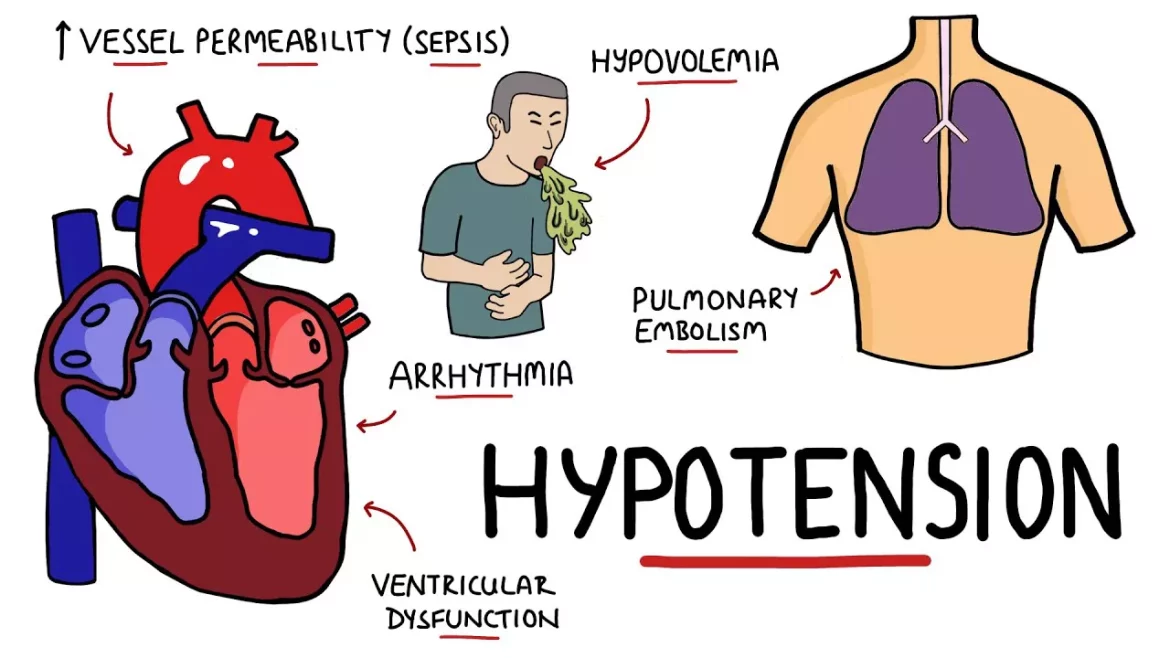Orthostatic hypotension, also known as postural hypotension, is a condition characterized by a sudden drop in blood pressure when a person stands up from a sitting or lying position. While this condition can affect people of all ages, it is particularly common among the elderly population. Understanding why orthostatic hypotension is prevalent in older adults requires delving into various physiological and lifestyle factors that contribute to this phenomenon.
Why Is Orthostatic Hypotension Common in The Elderly
Physiological Changes with Age
One of the primary reasons why orthostatic hypotension is common in the elderly is the natural aging process and its impact on the cardiovascular system. As people age, their blood vessels become less elastic and more rigid, leading to reduced vascular compliance. This decreased flexibility in the blood vessels makes it more challenging for the body to adjust blood flow rapidly, especially when transitioning from a seated or lying position to standing upright.
Additionally, aging is associated with changes in autonomic nervous system function. The autonomic nervous system plays a crucial role in regulating blood pressure and heart rate, among other vital functions. In older adults, there is often a decline in the baroreceptor reflex, which is responsible for detecting changes in blood pressure and initiating appropriate adjustments to maintain hemodynamic stability. This diminished baroreceptor function contributes to the susceptibility of the elderly to orthostatic hypotension.
See Also: Will Lemon Juice Lower Blood Pressure?
Medication Use
Another significant factor contributing to orthostatic hypotension in the elderly is the prevalence of medication use among this demographic. Many older adults manage chronic conditions such as hypertension, diabetes, and cardiovascular disease with medications that can affect blood pressure regulation. Certain medications, such as alpha-blockers, beta-blockers, diuretics, and vasodilators, may lead to orthostatic hypotension as a side effect.
Furthermore, polypharmacy, which refers to the simultaneous use of multiple medications, is common among the elderly.
The interaction between different drugs can exacerbate the risk of orthostatic hypotension by amplifying their combined effects on blood pressure regulation. Healthcare providers must carefully monitor medication regimens in older patients to minimize the potential for orthostatic hypotension-related complications.
Deconditioning and Physical Inactivity
A sedentary lifestyle and reduced physical activity levels are prevalent among many elderly individuals. Prolonged periods of inactivity can contribute to deconditioning, including weakened leg muscles and reduced cardiovascular fitness. When a person with deconditioned muscles stands up, the body may struggle to maintain adequate blood flow to the brain and other vital organs, leading to a drop in blood pressure and symptoms of orthostatic hypotension.
Regular exercise and physical activity are essential for maintaining cardiovascular health and improving orthostatic tolerance. Strength training, in particular, can help strengthen leg muscles and improve venous return, enhancing the body’s ability to compensate for postural changes and minimize the risk of orthostatic hypotension episodes.
Fluid and Electrolyte Imbalance
Inadequate fluid intake and electrolyte imbalances can also contribute to orthostatic hypotension, especially in older adults. Dehydration, which can result from factors such as reduced thirst sensation, medication side effects (e.g., diuretics), and age-related changes in renal function, can lead to reduced blood volume and lower blood pressure upon standing.
Furthermore, electrolytes such as sodium and potassium play crucial roles in maintaining fluid balance and supporting proper nerve and muscle function. Imbalances in these electrolytes, often exacerbated by certain medications or dietary factors, can disrupt the body’s ability to regulate blood pressure effectively.
Other Contributing Factors
Several other factors may contribute to the prevalence of orthostatic hypotension in the elderly:
Postprandial Hypotension: After eating a meal, especially a large one, blood flow is redirected to the digestive system, potentially causing a temporary drop in blood pressure, particularly in older adults with compromised autonomic function.
Underlying Health Conditions: Chronic conditions such as Parkinson’s disease, diabetes, and amyloidosis can affect autonomic nervous system function and increase the risk of orthostatic hypotension.
Alcohol Consumption: Excessive alcohol intake can dilate blood vessels and lower blood pressure, contributing to orthostatic hypotension episodes, especially when combined with age-related physiological changes.
Heat Exposure: Older adults may have reduced heat tolerance, leading to vasodilation and decreased blood pressure, particularly in hot environments or during prolonged exposure to heat.
Managing Orthostatic Hypotension in The Elderly
Given the multifactorial nature of orthostatic hypotension in the elderly, a comprehensive approach to management is essential. Healthcare providers should consider the following strategies:
Medication Review: Regularly review and adjust medication regimens to minimize the risk of orthostatic hypotension, especially in patients taking antihypertensive or vasodilator medications.
Hydration: Encourage adequate fluid intake, particularly in older adults prone to dehydration, while monitoring electrolyte levels to maintain proper hydration status.
Physical Activity: Emphasize the importance of regular exercise, including both cardiovascular and strength training exercises, to improve orthostatic tolerance and overall cardiovascular health.
Postural Changes: Advise patients to make gradual postural changes, such as sitting on the edge of the bed for a few moments before standing up, to minimize sudden drops in blood pressure.
Compression Garments: Consider the use of compression stockings or abdominal binders to improve venous return and reduce the pooling of blood in the lower extremities.
Dietary Modifications: Recommend a balanced diet rich in nutrients and electrolytes, with moderation in alcohol consumption and avoidance of large, heavy meals that can trigger postprandial hypotension.
Environmental Modifications: Suggest adjustments to the home environment, such as installing grab bars and avoiding excessively hot temperatures, to reduce the risk of falls associated with orthostatic hypotension.
Conclution
In conclusion, orthostatic hypotension is a common phenomenon in the elderly population, influenced by a combination of age-related physiological changes, medication use, lifestyle factors, and underlying health conditions. By understanding the mechanisms contributing to orthostatic hypotension and implementing appropriate management strategies, healthcare providers can help improve the quality of life and reduce the risk of complications in older adults prone to this condition.


